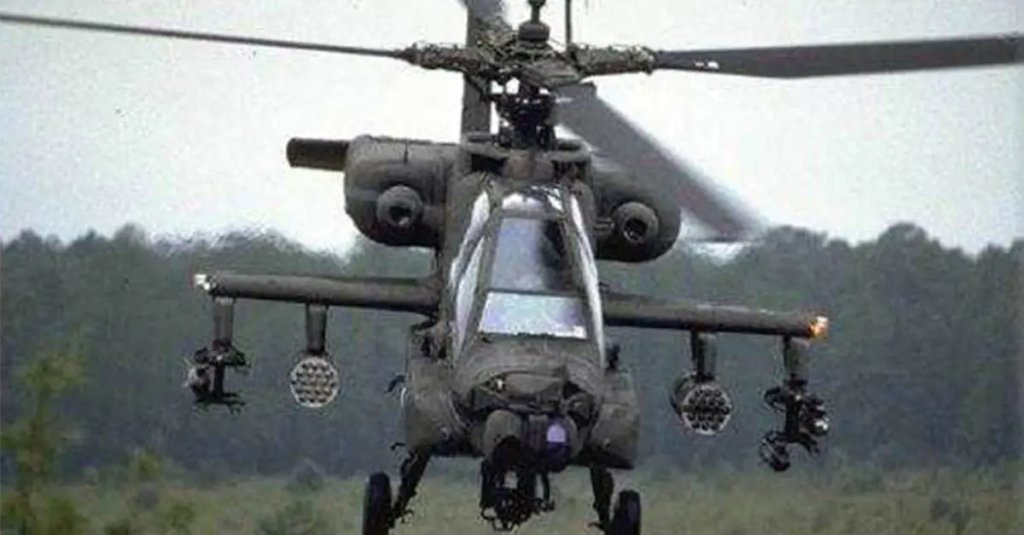With the fear that hordes of Russian tanks would storm through the Fulda Gap at the start of World War III, the United States Army looked for an advanced helicopter.
The first attempt, the AH-56 Cheyenne, didn’t quite make it. According to GlobalSecurity.org, the Cheyenne was cancelled due to a combination of upgrades to the AH-1 Cobra, and “unresolved technical problems.”

The Army still wanted an advanced gunship. Enter the Apache, which beat out Bell’s AH-63.
The Apache was built to kill tanks and other vehicles. An Army fact sheet notes that this chopper is able to carry up to 16 AGM-114 Hellfire missiles, four 19-round pods for the 70mm Hydra rocket, or a combination of Hellfires and Hydras, the Apache can take out a lot of vehicles in one sortie.
That doesn’t include its 30mm M230 cannon with 1200 rounds of ammo. The latest Apaches are equipped with the Longbow millimeter-wave radar.
According to Victor Suvarov’s “Inside the Soviet Army,” a standard Soviet tank battalion had 31 tanks, so one Apache has enough Hellfires to take out over half a battalion. Even the most modern tanks, like the T-90, cannot withstand the Hellfire.
Then, keep this in mind: Apaches are not solo hunters. Like wolves, they hunt in packs. A typical attack helicopter company has eight Apaches.

So, what would happen to a typical Russian tank battalion, equipped with T-80 main battle tanks (with a three-man crew, and a 125mm main gun) if they were to cross into Poland, or even the Baltics?
Things get ugly for the Russian tankers.
That Russian tank battalion is tasked with supporting three motorized rifle battalions, in either BMP infantry fighting vehicles or BTR armored personnel carriers, or it is part of a tank regiment with two other tank battalions and a battalion of BMPs. In this case, let’s assume it is part of the motorized rifle regiment.
This regiment is slated to hit a battalion from a heavy brigade combat team, which has two companies of Abrams tanks, and two of Bradley Infantry Fighting Vehicles, plus a scout platoon of six Bradley Cavalry Fighting Vehicles.
A company of Apaches is sent to support the American battalion. Six, armed with eight Hellfires and 38 70mm Hydra rockets, are sent to deal with the three battalions of BMPs. The other two, each armed with 16 Hellfires, get to deal with the tank battalion.

According to Globalsecurity.org, the AN/APG-78 Longbow radars are capable of prioritizing targets. This allows the Apaches to unleash their Hellfires from near-maximum range.
The Hellfires have proven to be very accurate – Globalsecurity.org noted that at least 80% of as many as 4,000 Hellfires fired during Operation Desert Storm hit their targets.
Assuming 80% of the 32 Hellfires fired hit, that means 25 of the 31 T-80 main battle tanks in the tank battalion are now scrap metal.
Similar results from the 48 fired mean that what had been three battalions of 30 BMPs each are now down to two of 17 BMPs, and one of 18, a total of 52 BMPs and six T-80 tanks facing off against the American battalion.
That attack would not go well for Russia, to put it mildly.


